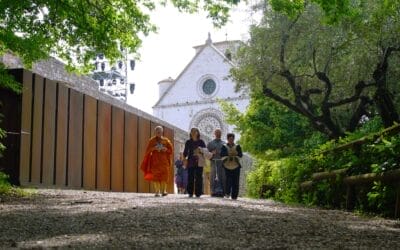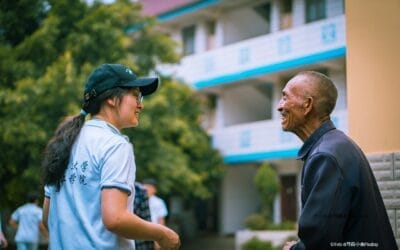 “It was a pilgrimage of Truth,” as Benedict XVI described the 2012 event in Assisi” commented one of the organizers of the event from the Focolare Movement. It brought together a hundred people – both Buddhists and Christians – from several parts of the world.
“It was a pilgrimage of Truth,” as Benedict XVI described the 2012 event in Assisi” commented one of the organizers of the event from the Focolare Movement. It brought together a hundred people – both Buddhists and Christians – from several parts of the world.
The Buddhists who came from Thailand, Japan, Taiwan, Sri Lanka, Malaysia and Korea represented different strands of Buddhism: Therevada with a group of Thai monks, Mahayana from Japan, besides the Rissho Kosei-Kai, a Buddhist association that for more than thirty years has been collaborating with the Focolare Movement. Present also were followers of the traditional schools such as Tendai-shu, the Nichiren-shu, and the Hosso-shu and the Chines Buddhism represented by the nuns who travelled from Taiwan, Sri Lanka and Malaysia, who belonged to two new associations: the Dharma Drum Mountain and the Fo Guang Shan. From Korea, there was one representative Won Buddhism.
 The Christian representatives – forty in all – were from Thailand, Japan, Korea, Taiwan, the United States, Austria, Switzerland, England and Italy, with the presence of Cardinal Jean-Louis Tauran, president of the Pontifical Council for Interreligious Dialogue, as well as the president of the Focolare, Maria Voce.
The Christian representatives – forty in all – were from Thailand, Japan, Korea, Taiwan, the United States, Austria, Switzerland, England and Italy, with the presence of Cardinal Jean-Louis Tauran, president of the Pontifical Council for Interreligious Dialogue, as well as the president of the Focolare, Maria Voce.
“Not only discover the common points, but build together a world full of love and of compassion, staying faithful to the identity of each religion. This is the extraordinary aspect of this syposium which is difficult to find anywhere else,” wrote Nichiko Niwano, president of the Rissho Kosei-kai in a message in which he summarized very well the atmosphere of deep trust that has been built over the years, and that enveloped all the newcomers.
The title of the gathering (“Understanding and living Scriptures as a way to universal harmony and peace”) was invented by the group of scholars who gave the presentations. Already in the preparation stages there was much collaboration both in choosing the content of the presentations and in preapring the translations in four languages. All this work permitted that after each presentation there was more time for open dialogue, which was expressed more as personal communion by each of the participants.
 The differences, not only between Christianity and Buddhism but also among the various strains of Buddhism, in this special setting of deep spirituality, did not create difficulty or tension. On the contrary, they became a precious reciprocal gift, rienforcing each one’s own faith.
The differences, not only between Christianity and Buddhism but also among the various strains of Buddhism, in this special setting of deep spirituality, did not create difficulty or tension. On the contrary, they became a precious reciprocal gift, rienforcing each one’s own faith.
“As I listened to the Scriptures of each relgion, I saw that there are some common points and some divergent ones, but this symposium was a growth of wisdom for each one of us, reciprocally,” said Phrakhru Suphan, master of Vippassana meditation and abbot of the Wat Ram Poeng Temple in Chiang Mai, Thailand.
Significant was the interest of monks from the traditional schools, in the modern Buddhist movements. Greatly appreciated was the presence among the Christians of one Anglican priest, a pastor from the Reformed Church and a Lutheran lay woman.
Throughout the gathering many spoke about the “special atmosphere” that they sensed, even recalling the words of John Paul II in 1986 with leaders of non-Christian religions in Madras, India: “May God be present in our midst, for when we open up to each other in dialogue, we open ourselves also to God.”




0 Comments